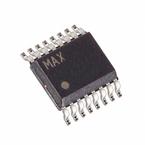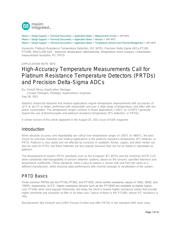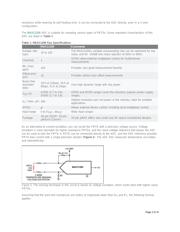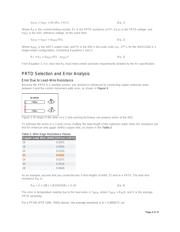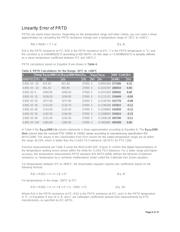herunterladen

Maxim > Design Support > Technical Documents > Application Notes > Measurement Circuits > APP 4875
Maxim > Design Support > Technical Documents > Application Notes > Sensors > APP 4875
Maxim > Design Support > Technical Documents > Application Notes > Temperature Sensors and Thermal Management > APP 4875
Keywords: Platinum Resistance Temperature Detectors, IEC 60751, Precision Delta Sigma ADCs,PT100,
PT1000, MAX11200 ADC, measures temperature ratiometrically, temperature errors analysis, Linearization,
measurement resolution, RT, PRTD
APPLICATION NOTE 4875
High-Accuracy Temperature Measurements Call for
Platinum Resistance Temperature Detectors (PRTDs)
and Precision Delta-Sigma ADCs
By: Sohail Mirza, Application Manager
Joseph Shtargot, Strategic Applications Engineer
Sep 30, 2011
Abstract: Advanced industrial and medical applications require temperature measurements with accuracies of
±1°C to ±0.1°C or better, performed with reasonable cost over a wide range of temperature, and often with low
power consumption. The temperature ranges common in these applications (-200°C to +1750°C) generally
require the use of thermocouples and platinum resistance temperature (RT) detectors, or PRTDs.
A similar version of this article appeared in the August 25, 2011 issue of EDN magazine.
Introduction
When absolute accuracy and repeatability are critical over temperature ranges of -200°C to +800°C, the best
choice for precision industrial and medical applications is the platinum resistance temperature (RT) detector, or
PRTD. Platinum is very stable and not affected by corrosion or oxidation. Nickel, copper, and other metals can
also be used for RTDs, but those materials are less popular because they are not as stable or repeatable as
platinum.
The development of modern PRTD standards such as the European IEC 60751 and the American ASTM 1137
allow substantial interchangeability of sensors between systems, based on the sensors' specified tolerance and
temperature coefficients. These standards make it easy to replace a sensor with one from the same or a
different manufacturer, while ensuring rated performance with minimal redesign or recalibration of the system.
PRTD Basics
Three common PRTDs are the PT100, PT500, and PT1000, which exhibit resistance values of 100Ω, 500Ω, and
1000Ω, respectively, at 0°C. Higher-resistance devices such as the PT10000 are available at slightly higher
cost. PT100s were more popular historically, but today the trend is toward higher-resistance values that provide
higher sensitivity and resolution at little or no extra cost. Typical of these is the PT1000, whose 0°C resistance is
1kΩ.
Manufacturers like Vishay® and JUMO Process Control now offer PRTDs in the standard SMD sizes (very
Page 1 of 10
Verzeichnis
- ・ Blockdiagramm on Seite 9
- ・ Technische Daten on Seite 3
- ・ Anwendungsbereich on Seite 1

